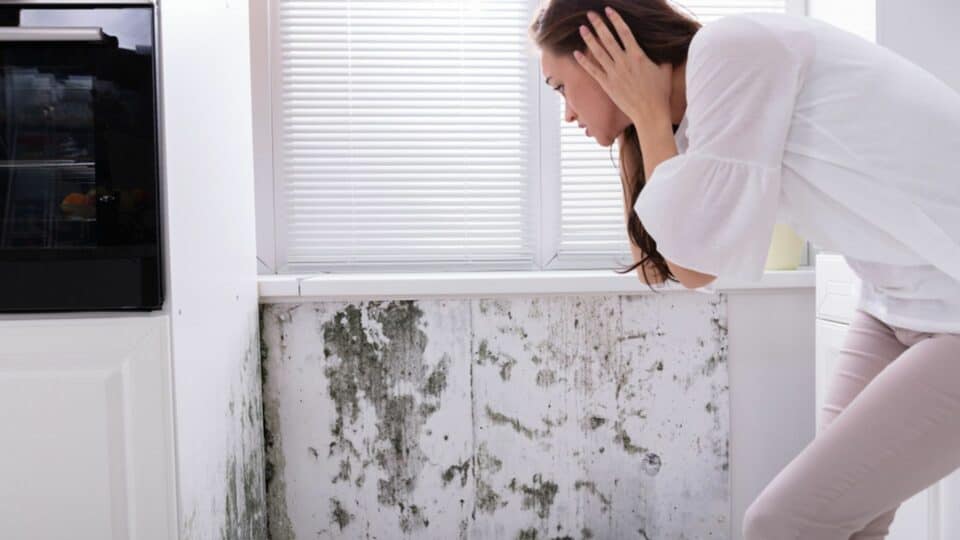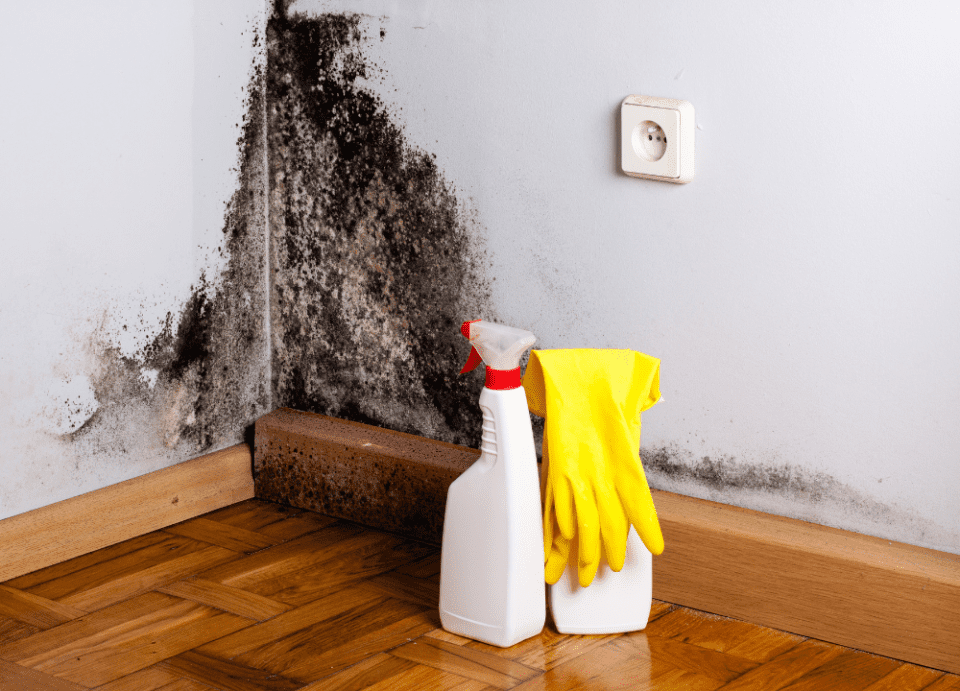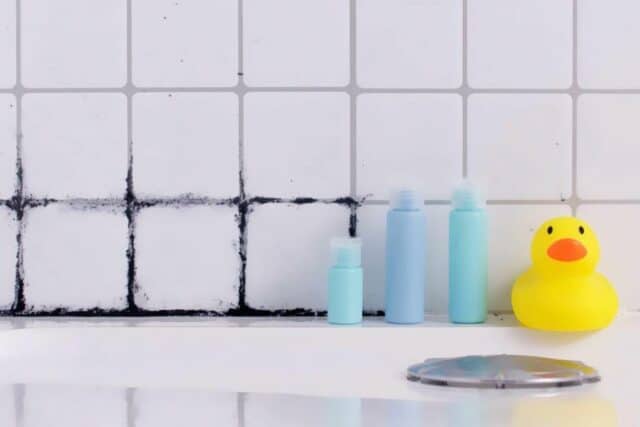Mould Mitigation in Social Housing
Mould growth can be an almost constant problem in social housing. In areas with excess moisture and humidity, it is only natural that mould will begin to grow, and even a small amount of mould can often cause a range of problems within the property. Unfortunately, knowing how to mitigate this mould often is not enough – you need the tools and experience to actually prevent further damage.
Simaxx can monitor the presence of any relevant conditions that might cause mould growth, providing alerts to social housing landlords. Of course, this is not the only way that you can tackle the problem – the more tools you use to prevent its growth, the easier it becomes to ensure that a property is completely safe and free of long-term problems.

What Causes Mould Growth?
Mould growth is mostly caused by excess moisture, whether that is through flooding, humid air, condensation or water leaks. Once it starts to grow, mould can survive in areas with almost no oxygen or ventilation, making it incredibly difficult to clear it out of the building unless you have the right tools.
The best way to ensure that it does not become a long-term problem is to mitigate it ahead of time. Controlling high moisture levels, managing severe condensation and improving ventilation systems can all be important steps toward dealing with the mould that is currently spreading through your home.
Simaxx can be a valuable platform for dealing with the rising damp that usually causes mould condensation, alerting you to situations where it is quite likely to start forming. Even the most basic preventative measures can stop spores from taking hold, but you still need to be vigilant about dealing with them before they can cause even more damage.
When You Should Take Action
UK social housing tenants have full control over when they attempt to tackle their damp problems. The social housing providers, on the other hand, do not usually need to get involved in combating damp and mould unless it is beginning to impact the tenants’ health and safety. On the other hand, if the mould has been caused by a repair issue, then the landlord needs to step in.
Tenants and homeowners are expected to take responsibility for controlling the rising damp, at least in the early stages of growth. This means using ventilation systems correctly, heating the property in a way that prevents the spread of mould, and reacting to the presence of the mould correctly rather than just ignoring the potential risks.
What Damage Can Mould Do?
Many people do not understand the risks of mould. While a UK homeowner or tenant might think that it is simply an annoyance, it can actually be a serious health hazard to certain people and tends to cause major damage to a building if it is not dealt with quickly.
General Damage
Mould tends to eat away the surfaces that it grows on, from wood and fabric to glass and plastic. This means that even the most modern design of a home can’t withstand it forever – it can spread across windows, crawl up walls, or even reach your clothes. The longer you let the rising damp and mould persist, the harder it will be to get rid of this reliably.
The penetrating damp can affect walls, floors, ceilings, and almost any other surface within a room in your home. Without proper ventilation, it is easy for condensation and mould to spread through the air so fast that it affects all of your walls – windows included – before you can stop it.
Allergies
Mould spores can produce allergens, irritants, and even toxic substances. This can make some rooms inherently dangerous to exist in for too long, with high condensation and mould making almost any space very uncomfortable if you spend more than a few minutes in there. Even if you are not impacted by any of the allergens, the high moisture levels and stuffy air can make it hard to breathe.
Flooring
Condensation and other related symptoms can all cause damage to your floorboards, warping the surfaces directly. This is most common in places like bathrooms, but it can happen anywhere. Not only that, but the damaged floorboards will often start to spread the mould even faster.
Insulation
Mould can also start to damage your insulation, eating away at the materials and making it even harder to keep the space heated. This allows each cold surface to spread the mould spores faster, as well as opening up more situations where severe condensation can only get worse and worse if you do not tackle it directly.

Tackling Mould
The best way to avoid mould is to prevent it ahead of time or at least find a solution before it can spread too far. This means looking at the way that condensation and mould are spreading through your home to pick out potential solutions that might stop the spread early.
Planning Ahead
It is a good idea to be prepared for spores even if they have not actually turned up yet. Monitoring damp areas (or removing damp areas entirely) can prevent spores from even establishing themselves in typical damp corners, and checking on your walls regularly can help you spot any high-risk areas.
Keep a mental note of anything that might be important – spaces where mould spores could easily start to grow. This means areas without much fresh air, spaces not covered by extractor fans, cold spots with a lot of condensation, or areas that you can’t easily clean. Remembering where they are can allow you to spot and neutralise spores before they spread.
Reducing Humidity and Removing Excess Moisture
The most effective solution is usually to remove moisture from the air. Condensation and humidity can allow mould to grow rapidly, and the more you create, the harder it is to get rid of the results.
Some common ways to reduce humidity and ward off the wall-penetrating damp include:
- Cleaning up spills and leaks quickly.
- Setting up a dehumidifier to reduce condensation and moisture in the air.
- Use an extractor fan to remove moisture while cooking.
- Avoid doing things that would put more moisture into the air, like drying clothes indoors.
- Dry all fabrics before you store them, especially if you just took your clothes out of the wash.
- Clean surfaces regularly so that the damp and mould never get a chance to take root anywhere.
- Use mould-killing products in rooms with a lot of condensation, like bathrooms.
- Do not put wet items directly on the floor, especially not fabrics.
- Make sure that all water and airflow-related systems are properly maintained.
While these might not stop the mould from growing, they can at least allow you to control the spread. For example, you might be able to stop it from taking hold of corners that are hard to access or keep it away from cooking surfaces to ensure that it does not contaminate food.
Combating Mould
Sometimes you need to deal with the mould directly. Once mould gets into housing stock, it can be hard to get rid of, at least at first. By taking an active stance towards dealing with it, you can ensure that it does not get a chance to spread any further – and can ensure that it will not harm anybody living in your building.
Wipe Down Surfaces
Condensation and mould can be stopped simply by wiping them up. Harder surfaces can easily be wiped with commercial products, soap and water mixtures, or even just bleach. By wiping and then drying the surfaces, you can kill a lot of the mould in one fell swoop.
Just remember that you will still ideally want to cut it off at the source. Wiping down a damp area every month is easy, but it is much more efficient to introduce proper heat and ventilation to try and deal with the condensation that is keeping it damp.
Use an Extractor Fan to deal with Rising Damp
Kitchens and other humid areas often struggle to get rid of dampness. An extractor fan provides that exact solution, but many people do not even remember that they exist until a professional mentions them.
They are one of the easiest kinds of fans to get on the UK market, and installing an extractor fan near windows can even keep those windows clear of mould in the long term. Finding the right fan can take some searching, but there are plenty of good options on the market to choose from.
Use Antifungal Products
You can directly kill a lot of mould by simply using specialised antifungal paints or other similar products. These are naturally very good at dealing with mould, especially when combined with additional tools like an extractor fan or a full ventilation system.
Painting your walls with antifungal paints can be a great option, but it also becomes costly if you are doing it across multiple rooms. With older properties, this can be important due to the age of the walls, often leaving more space for mould to form.
However, you do not want to overextend and break your own budget. Take your housing tweaks one step at a time, and use an antifungal solution only when necessary. There are cheaper and more indirect ways to achieve success at killing off mould: for example, using heating and vent options well.
Be Proactive
Cover pans in humid kitchens, use a condenser tumble dryer, close bathroom doors to prevent condensation from spreading, and do whatever else you can to minimize the risk of spreading mould. Improving airflow and ventilation can be one of the most basic steps to tackling mould by yourself.
Even simple ventilation systems are invaluable. A vent does not just reduce the chance of condensation and mould build-up but allows you to avoid a room from being filled with mould if it is enclosed. A simple vent to a source of fresh air can prevent people from suffering allergic reactions as quickly or even feeling general discomfort. Simaxx have an air quality monitoring reporting tool which alerts you when poor environmental conditions are likely to occur.
Installing a damp-proof course to stop penetrating damp spots from forming, using your tumble dryer to dry off clothes, cleaning furniture that may be housing mould – all of it makes a difference. Even having a new vent installed, or upgrading the existing vent system installed in your home, can be a good option.
Simaxx can show you a range of useful data to help you understand your home’s current “health”, providing you with more obvious windows or improvements to keep your home and its inhabitants safe.

Other Options
There are a lot of ways to take care of the penetrating damp and high risk of mould in your home, and the best solution will be different between properties. Damp impacts different homes in different ways, and even individual rooms can have drastically different levels of condensation and mould.
Many landlords will take steps to protect properties once the damp becomes a more serious concern. Until then, there are various ways for residents to take care of rooms, walls, windows, roof sections, and anything else that might prove problematic.
- Check wall and roof areas, as well as windows, that tend to get damp. Some wall and roof spaces are more vulnerable than others, and you want to find the most vulnerable wall and roof sections on your property so that you can protect them better.
- Look over your heating to see if you are able to heat colder rooms. A heating system, combined with a fan, can allow you to heat rooms while also getting the moisture out of the air.
- Cover pans, furniture, cooking utensils, or anything that you want to protect from the mould while you deal with the problem. Getting mould off a wall is a lot easier than getting it out of furniture, especially if that furniture is housing the mould inside it.
- Take proper health and safety measures. Whether you are a tenant or one of the area’s landlords, you want your building to be safe for people with allergies or potential health risks.
- Contact UK local authorities if landlords have been intentionally neglecting your building. If residents can’t buy or create the solutions needed to make their homes safe, then your landlords need to, and you will want to contact local authorities if those landlords refuse to follow whatever regulations have been set for them.
- Do your research. Look up important tips and data on dealing with mould, including things that you can do as residents to fix the problem. Even a small lead on a possible solution – or useful product on the market – can be enough to keep your building mould-free.
- Use Simaxx. Our platform can provide important data to lead you in the right direction, covering everything from humid air to potential fan performance, as well as allowing you to make more informed decisions about how you will approach the problem on your own.
With increasing focus on providing greater insulation in social housing, in order to address rise in utility costs and associated risks of fuel poverty. There is a corresponding increased likelihood of a rise in humidity and potential instances of mould propagation if fresh air is not brought into the premises . Simaxx can monitor the presence of conditions likely to encourage mould and provide alerts to the social housing landlords.
Synthesise Data into a picture of Housing Stock ‘Health’
Where humidity levels are above a certain threshold for an extended period of time, the chances of mould propagation are increased.
Maintaining a focus on the conditions likely to promote mould growth is just one of several ‘Well being’ elements that can be monitored to provide an overall picture of habitability of a tenanted property. Levels of CO2 and general temperature conditions can be synthesised into an overall picture of housing stock health.
Simaxx analytics can help prevent mould before it becomes a problem:

